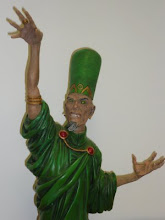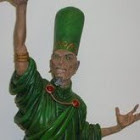
An excellent Sherlock Holmes story with a strong original plot. Following an explosion at a warehouse in the East End of London, Sir Samuel Henry, who had been an assistant police commissioner, receives a death threat apparently from the same people responsible for the warehouse explosion. Sherlock Holmes, Dr. Watson. Inspector Lestrade and Inspector Davis of the Special Branch meet at Sir Samuel's house. Sir Samuel is shot and Sherlock Holmes is arrested for his murder, the evidence against him is very compelling. The story gathers steam very nicely, the reveals are very well paced, the action is very well staged and the climax sharp and thoughtful.
This is a very well done Sherlock Holmes story, Leah Moore and John Reppion have clearly understood both what the requirements are to create a Sherlock Holmes story and how to creatively use the restrictions in a fresh and enticing way. The story brings Dr Watson and Inspector Lestrade to the fore and both presented as intelligent, competent and active characters. They very effectively share the spotlight with Sherlock Holmes and the give the story depth and colour. Sherlock Holmes himself is given an opportunity to be clever, devious and dangerous, the story takes him seriously and the plot is cunning constructed to demonstrate his qualities.
The art is splendid, the details and textures of the period are all there, the cast are superbly drawn, they move and inhabit their context in a natural and effective fashion. The body language is eloquent and clear. The colouring is a joy, it is bright and vivid and lifts the action and gives depth and force to the quiet moments.
The volume itself has great extras, the script for the first issue, The Adventure of the Devil's Foot is printed in full with illustrations by Aaron Campbell. In addition there is a short and informative essay on Sherlock Holmes in comics and best of all Leah Moore discusses writing the story. All in all a superb package.










